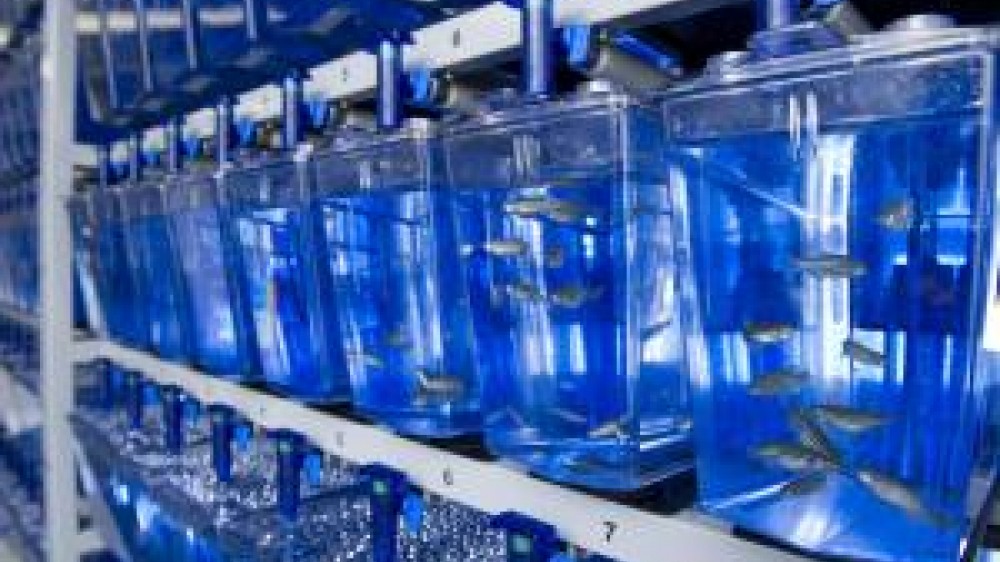NC3Rs/IAT Animal Technicians’ Symposium

Together with the Institute of Animal Technology (IAT), we recently held a symposium for animal technicians, an event bringing together technicians from various backgrounds and speakers from both academia and industry.
This was our ninth Animal Technicians’ Symposium, an event that has always proved popular with technicians from around the UK, and the first organised in collaboration with the IAT. Talks covered a range of subjects such as novel methods for assessing the welfare of various species, improvements to widely-used scientific procedures, and the role of named persons under the Animals (Scientific Procedures) Act.
Between the presentations, nearly 150 delegates had a chance to network and view posters presented as part of a poster competition.
Karen Dunford (pictured below) from University College London (UCL Fish Facility) won a £400 prize for the best poster: “Refinement of a health monitoring system for laboratory zebrafish”.
We spoke to Karen about her work and her thoughts on the event:
Did you enjoy the symposium? How does it feel to have your work recognised by the NC3Rs?
The symposium was great and very informative. I enjoyed speaking to people who work in my field. It was interesting and encouraging to see that others are also thinking about the health of zebrafish. The recognition is obviously encouraging as well, and we intend to continue with this line of work, hoping that other facilities will look into systems for health monitoring.

Could you tell us briefly about the new monitoring system you describe in your poster?
We developed our body condition scoring system about 3 years ago. Even though zebrafish are becoming more and more popular as a model, the husbandry methods are still not as well understood as their mammalian counterparts, and zebrafish husbandry standardisation has yet to be developed; this includes health monitoring. Mammalian models have various welfare scoring systems, such as the well-known grimace scale for assessing pain, and body condition scores used in agriculture; we wanted to explore the possibility of developing one for zebrafish. Our system has four colour-coded scores and is based on visual assessment, without the need to handle the animals; there are clearly defined criteria for each score, with a corresponding action. We developed it into a two tiered system, with a primary check, flagging tanks with diseased fish with the appropriate colour and score, and then a secondary check by a senior, more experienced staff member who makes the final decision about what action should be taken. After conducting a health screen on diseased fish, using PCR and histology, we found that, in most cases, there was a definable cause of disease, helping to validate our health monitoring system.
What are the advantages of the new system? Where do the 3Rs come into this?
Our new system has been shown to identify more diseased fish, and they are identified earlier than under our previous protocol. This has allowed us to reduce the numbers of fish exceeding the severity limits on project licences and minimise suffering, by removing and humanely killing fish showing early signs of disease. Our health records have become more standardised, as our system has led to staff being more accurate at detecting diseased fish. Using these records, we are currently looking into revising existing severity limits for specific genetic strains.
What were the challenges involved in developing the new system?
We have found this system to be labour intensive. We have a large facility, and having a two tiered monitoring system has doubled the man hours for health checks. However, in light of our findings, we see our system as a refinement and therefore necessary.
Do you think the system could be applied in other institutions outside of UCL?
This system can easily be translated into any zebrafish facility. The materials are easily found anywhere; we use plastic stationary flags that can be found in any stationary store, and marker pens. The system is easy to grasp and requires little training, as well as an electronic database or paper records. It is not designed to be facility specific, but is flexible enough to meet specific needs.
What is your favourite part of this job?
I enjoy working with the fish, and developing methods of husbandry. Zebrafish husbandry is still relatively new and there is a lot to explore. My role as a research assistant for the husbandry team allows me to be involved in this exciting field.
